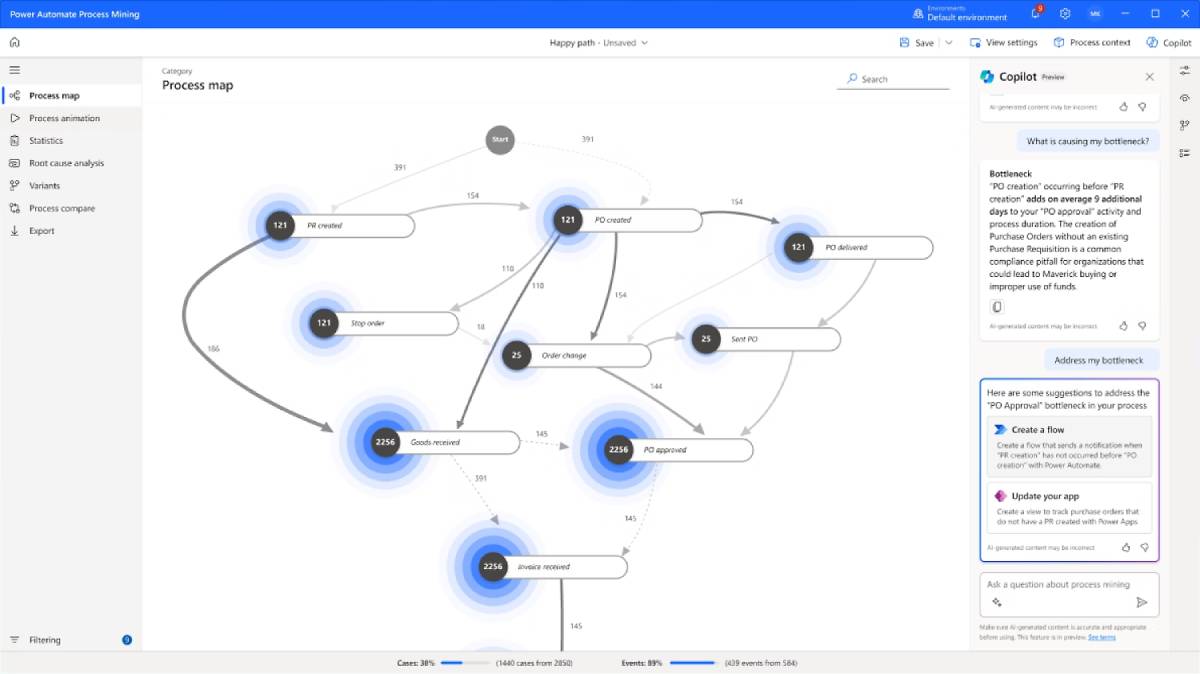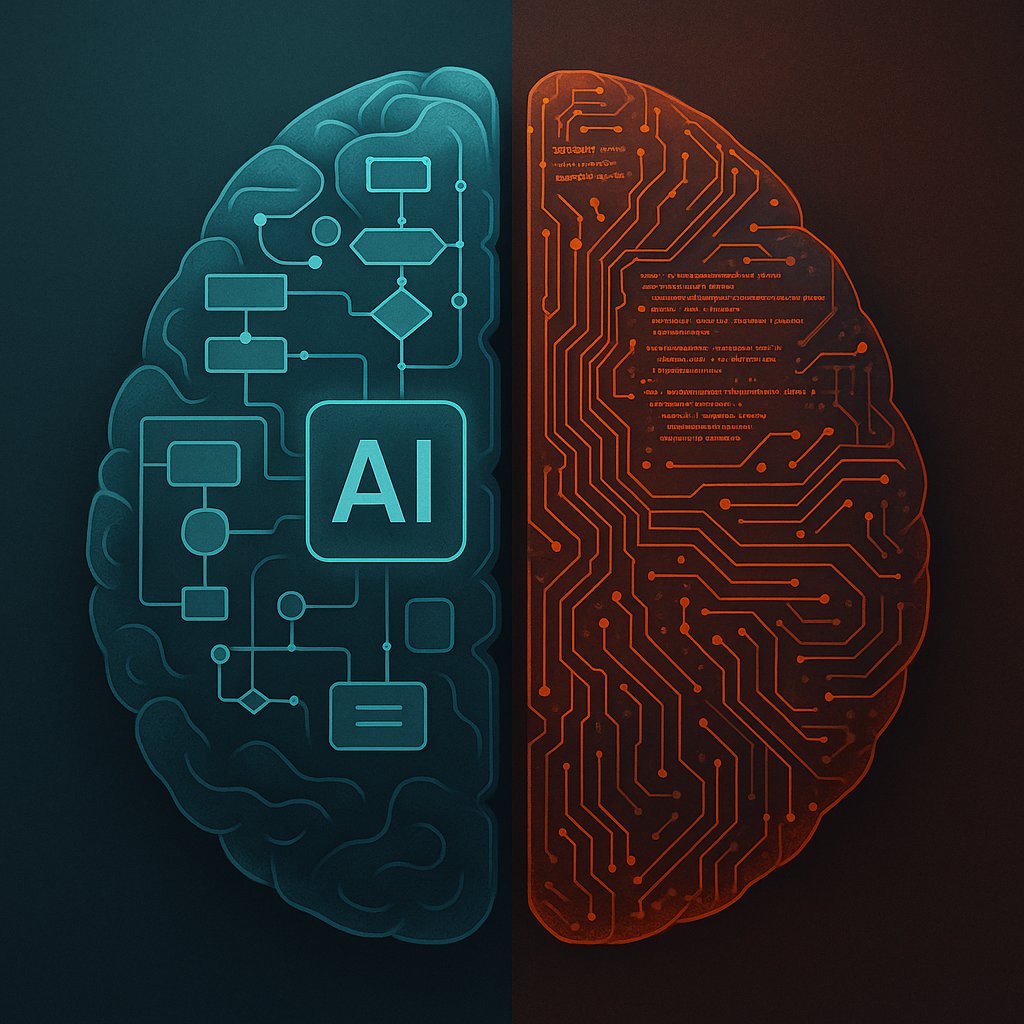AI is transforming business operations across industries, but when it comes to implementation, companies face a crucial decision: should they build their production ready AI solutions on a low-code platform or build a fully custom AI solution?
This post breaks down the core differences, use cases, costs, and challenges associated with each approach, helping senior decision-makers choose the right path for their AI transformation strategy.
Contents
- Introduction to Low-Code and Custom AI
- Key Comparisons: Cost, Time, Scalability & More
- Typical Tech Stacks for Each Approach
- Real-World Case Studies
- Strategic Takeaways for Business Leaders
- Final Verdict: How to Choose
Introduction to Low-Code and Custom AI
What is Low-Code AI?
Low-code AI platforms are tools that allow users to build and deploy AI models and automations with minimal coding. They rely on drag-and-drop interfaces, pre-built models, and connectors that abstract the complexity of AI development. Popular platforms include:
- Microsoft Power Platform
- Google Vertex AI Studio
- UiPath
- DataRobot
- AWS SageMaker Canvas
These platforms are ideal for rapid prototyping and development in theory without dedicated software engineering teams. However, some technical oversight is still critical.

Challenges with Low-Code AI development
While most of the heavy lifting can be done by the low-code platforms to get things working, businesses should be aware of several important limitations:
- Technical Complexity Still Exists: Setting up production-grade AI with low-code tools still requires a developer mindset — understanding APIs, data schemas, and prompt engineering.
- Usage Limits and Throttling: Some platforms enforce API call quotas or execution time limits, which can interrupt business processes or worse cause data corruption or loss if these limitations are hit.
- Scaling Can Get Expensive: Subscription plans and usage-based pricing models can balloon in cost as more users or transactions are added. Over time, this may potentially rival or even exceed the cost of a well-optimised custom AI solution.
- Performance Limitations: Workflows may fail silently or timeout under heavy load, particularly if not tested properly in production-like conditions.
For these reasons, even with a seemingly less technically complex solution, getting around these challenges may require a competent AI developer to get your solution to production grade that saves or makes your business money in the long run.
Alternatively, a well versed AI transformation partner may recommend your business a custom AI solution if your use case really needs it.
What is Custom AI?
Custom AI involves building machine learning or deep learning systems from scratch or by assembling components using traditional development stacks. This includes designing data pipelines, training custom models, and optimising deployments for performance, scalability, or compliance.

It is typically used when businesses need:
- Full control over model architecture and data flows
- Advanced or proprietary logic
- Industry-specific compliance or security measures; or
- A solution that is their core product or service (ie. they are a SaaS or Software company themselves)
The advantages of custom AI solutions are its flexibility in having access to all of the nuts and bolts of the solution, which for any companies that have a development team, can finely adjust, test and deploy when ready.
By contrast, low-code solutions are gated by what you can do through their user interface, and so any challenges that arise with solutions built on low-code platforms may over time need components replaced, or the solution re-created entirely.
Lastly with custom AI development, you don’t need to subscribe to low-code services and instead rely on (relatively) cheaper Cloud platforms to deploy your solutions to instead, which depending on use case, might save your business money in the long run – just expect custom AI solutions to come with a hefty development cost before you get to see it.
Key Comparisons: Real-World Differences
| Criteria | Low-Code AI | Custom AI |
|---|---|---|
| Development Cost | Lower initial cost; SaaS subscription or pay-per-use | High initial investment in dev time, infra, and talent |
| Time to Market | Fast (days to weeks) | Slow (weeks to months or more) |
| Operational Cost | Ongoing platform fees; some usage-based | Variable cloud/on-prem costs, but no vendor lock-in |
| Scalability | Limited by vendor capabilities | Scalable with full flexibility |
| Cloud vs Self-hosted | Primarily cloud-based | Can be cloud, on-prem, or hybrid |
| Data Sovereignty | Subject to vendor hosting laws | Fully controllable (esp. for on-prem deployments) |
| Security | Relies on vendor’s security posture | Full control and responsibility |
| Troubleshooting & Debugging | Limited transparency; vendor support needed | Full observability and control over logs, metrics |
| Customisation | Constrained to platform’s features | Unlimited, but resource-heavy |
| Compliance Readiness | Some built-in certifications (e.g., ISO, SOC2) | Must be implemented manually |
| Skill Requirements | Minimal coding; domain knowledge key | Requires ML engineers, data scientists, MLOps experts |
Tech Stacks: Typical Tools & Frameworks
Low-Code AI Tech Stack
- Platform: Microsoft Power Automate, Salesforce Einstein, DataRobot
- Data Connectors: Zapier, Make.com, N8N, API connectors
- Cloud: Azure, AWS, GCP (hosts the platforms above)
- Use Cases: Sales forecasting, HR automation, document processing, chatbot setup
- Special Cases: Cognigy for conversational AI; MonkeyLearn for text analysis
Custom AI Tech Stack
- Languages: Python, R, Scala
- Frameworks: TensorFlow, PyTorch, Scikit-learn
- Data Engineering: Apache Airflow, DBT, Spark, Pandas
- MLOps & Deployment: MLflow, Docker, Kubernetes, Seldon, BentoML
- Cloud/Infrastructure: AWS, GCP, Azure, or on-prem using VMs or container orchestration
- Use Cases: Real-time fraud detection, predictive maintenance, NLP with large-scale domain data, financial forecasting
- Special Cases: Hugging Face Transformers (for LLMs); Nvidia Triton (for inference optimisation)
Real-World Case Studies
Low-Code Success: Retail Automation with Power Platform
A national retailer in Australia used Microsoft’s Power Platform to automate customer service ticket triaging. Non-technical staff configured AI models using prebuilt NLP templates to route queries faster. The result?
- Deployment in 3 weeks
- 50% reduction in average response time
- No extra dev hires required
Lesson: For standard AI tasks with high repeatability, low-code delivers immense speed and ROI.
Custom AI Success: Predictive Maintenance for Utilities Firm
A Southeast Asian energy utility built a custom AI model to predict equipment failures. The data came from IoT sensors and spanned 5+ years. Due to data privacy and latency concerns, the system was deployed on-prem with Kubernetes and PyTorch.
- Costly 9-month build
- 95% accuracy in predicting faults
- $3M saved in unplanned downtime in year one
Lesson: For use cases requiring high accuracy and custom data integration, custom AI pays off-despite longer ramp-up.
Low-Code Limitation: Financial Risk Modelling
A mid-tier bank attempted to use a low-code tool for credit risk scoring. While setup was fast, it couldn’t support model explainability or custom logic required for APRA compliance. They had to pivot to a custom-built model using Scikit-learn and Azure ML.
Lesson: Regulatory and interpretability requirements can render low-code infeasible for certain industries.
Strategic Takeaways for Business Leaders
- Use Low-Code when your goals are speed, standardisation, and cost-efficiency for common business automations. Great for prototyping or launching MVPs.
- Go Custom when the business impact is high, the logic is complex, or when you need strict control over data, infrastructure, or compliance.
- Hybrid Approaches are growing: for example, using a low-code UI layer with custom APIs running behind the scenes.
If timely results are what matter to you the most, consider running pilot projects in both forms to evaluate real-world effectiveness before a full-scale rollout.
Final Verdict: How to Choose
| If You Prioritise… | Choose… |
|---|---|
| Speed to market | Low-Code |
| Full control & customisation | Custom |
| Cost-efficiency & repeatability | Low-Code |
| Proprietary logic or IP | Custom |
| Easy scaling for non-technical teams | Low-Code |
| Complex integrations | Custom |
| High application demand or loads | Custom |
That said, it is feasible to start with a low-code AI solution, and then graduate to a custom AI solution once the business case has been fully realised to build in more robustness and scalability into your solution. Just make sure your business case can be solved with a low-code approach first and that you are aware of when you should upgrade.

